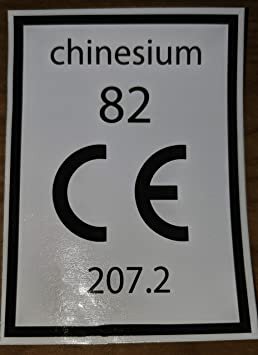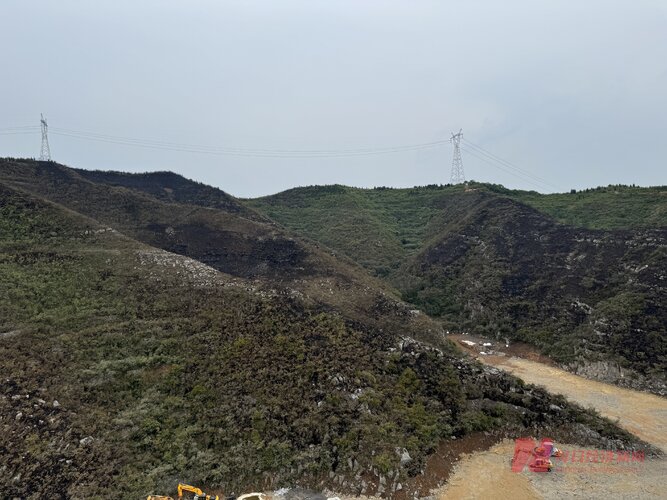Actually, I was not aware of any other projects of this scale outside Long March 10A and LandSpace (though that is methox). Who else is going in this direction?
Quick list of Chinese "Falcon-like" next generation medium and heavy launchers:
Government projects: these are serious, sanctioned projects by the CASC, the traditional missile/launcher-making SOE with over 50 years of experience, which launches 50 rockets a year, including manned launches, these are as certain as Vulcan, H3 or Ariane 6 were certain, if not more.
-
CZ-10A, build by CALT/"1st Academy of CASC" the chinese reusable crew launcher. CZ-10A is the Single-core version which will carry the upcoming capsule Mengzhou, Shenzhou's successor, to the Tiangong space station by the end of the decade, It uses an original recovery method using strings, kinda similar to Starship's arms.
A static fire of a 3-engines version happened earlier in June; a low altitude VTVL test of the first stage is planned in 2025.
Diameter: 5m
Payload: >14t to LEO in reusable mode.
First Stage Engines: 7xYF100K/N engines, an improved, reusable version of the kerolox engines that power the CZ-5 to CZ-8, (831 tf)
Planned first launch: 2026
Launch Site: Dedicated Wenchang Pad
-
CZ-10, built by CALT, It is the Tricore ("Falcon Heavy") version of CZ-10A, with an additional Hydrogen-Oxygen third stage, so far it is exclusively dedicated to the crewed lunar program, and therefore needs all its performances, so only an expendable version seem to exist.
Diameter: 5m
Payload 70t to LEO, 27t to Trans-Lunar Injection.
First Stage Engines: 3x7xYF100K, 2674 tf, Staged Combustion Kerolox
Planned first launch: 2027
Launch Site: Dedicated Wenchang Pad
-
CZ-12 (previously known as "XLV" or "XLV-20"), Built by SAST/"8th Academy of CASC", A medium, expendable launcher of roughly F9 1.0 dimensions dedicated to the commercial market. Largely thought to be repurposed from the R&D of SAST's attempt at a CZ-10 competitor. It succesfuly flew on November 30 2024, a second launch is under preparation.
Diameter: 3.8m
Payload: 12t to LEO, 6t to SSO
First Stage Engines: 4xYF100K, 510 tf, Staged Combustion Kerolox
First Launch: November 30 2024
Launch Site: Wenchang Commercial Pad 2, compatibility with Inland launch centers.
-"
Reusable 4m Launcher" (previously known as "XLV-22"; Now informally known as "CZ-12A"), Built by SAST. A Medium, reusable launcher, probably of current F9 dimensions, particularity is that it uses engines developped by the private company Jiuzhou Yunjian.
A "grasshopper" version did a Reusability test earlier this month.; this Grasshopper
flew again to 75km altitude on January 19 2025, but presumably failed to softly splashdown.
Diameter: 3.8m (likely)
Payload: At least 6.5t SSO reusable
First Stage Engines: 7xLongyun-70, ~490 tf, Gas Generator Methalox.
Planned first launch: NET September 2025
Launch Site: Wenchang Commercial Pad 2, compatibility with Inland launch centers.
-CZ12B. A mysterious new reusable launcher project developped by SAST and a new CASC subsidiary named "China Aerospace Science and Technology Group Commercial Rocket Co" it is largely thought to be a kerolox launcher.
Diameter: 4.2m (likely)
Payload: higher than 4m RLV
First Stage Engines: Maybe YF-102R, Gas Generator Kerolox.
Planned first launch: NET 2026
Launch Site: Wenchang Commercial Pad 2?
Beside the last two, SAST has expressed interest in developping "tricore" versions of each, these are not sanctionned.
Projects by companies that already launched a rocket to orbit.
-Zhuque 3, built by Landspace, which sent the first Methalox-powered launcher to orbit last year. A Medium-heavy reusable launcher using a stainless steel structure.
A "grasshopper" version did a low altitude test earlier this year, and a high altitude
one happened in september. Since then they shared progress on their engines and structure. The first few launches will feature an intermediary version using the 20% lower thrust Tianque-12A engines and
a payload of only 11.8t
Diameter: 4.5m
Payload: 18.3t to LEO Downrange-Reusable, 21.3t to LEO Expendable. 12.5t to LEO RTLS-Reusable.
First Stage Engines: 9xTianque-12B, ~900 tf, Gas Generator Methalox, developped in-house
Planned first launch: July 2025
Launch Site: Wenchang Commercial Pad 2, Landspace's own pad at Jiuquan (LC-96B).
-
Tianlong 3, built by Space Pioneer. Medium reusable launcher. A Tricore version "TL-3H" is planned (68t to LEO)
Diameter: 3.8m
Payload: 17t to LEO, 14t to SSO.
First Stage Engines: 9xTianhuo-12 , ~820 tf, Gas Generator Kerolox, developped in-house
Planned first launch: May 2025.
Launch Site: Wenchang Commercial Pad 2, Space Pioneer's own pad at Jiuquan.
-
Pallas 1, built by Galactic Energy, by far the most succesful chinese private LSP which regularly launches its Electron-Sized Ceres 1. Medium Reusable launcher. Have been working on a
pathfinder since early 2023 Recently did a
Gimbal-integrated hot fire test of their engine. A tricore version is planned (30t to LEO, with wider tanks, 3.8m instead of 3.35m). Recently, stages of their maiden launch rocket could be een.
Diameter: 3.35m (engine bay is ~3.8m)
Payload: 8t to LEO
First Stage Engines: 7xWELKIN/Cangqiong-1 , ~350 tf, Gas Generator Kerolox, developped in-house
Planned first launch: June 2025.
Launch Site: Wenchang Commercial Pad 2, Galactic Energy's own pad at Jiuquan.
-
Kinetica 2, built by CAS Space, a Majority-public-owned company owned by the Chinese Academy of Science. CAS already succesfuly launched the solid rocket "Kinetica 1" three time (probably shared development with CALT's Jielong 3) . Tricore Medium Reusable Launcher. Recently did a cold test of a single-engine stage prototype
and are building a "grasshopper". They also plan a four boosters version "Kinetica-2H" and a "mini-starship" "Kinetica-3". First flight model tanks are appearing
Diameter: 3.35m
Payload: 12t to LEO
First Stage Engines: 3x3xYF-102, 766 tf, Gas Generator Kerolox, developped by the state-owned AALPT and already used on Tianlong-2
Planned first launch: September 2025.
Launch Site: Wenchang Commercial Pad 2,
Jiuquan
-
Hyperbola 3 (also known as "SQX-3"), built by I-Space, which launched the Hyperbola-1 solid rocket three times to orbit (and has another launch planned tomorrow), Reusable Medium launcher,
currently doing testing on a "grasshopper" using the same engine. Engine has been
repeatedly test fired. A tricore version is planned. First flight model tanks are appearing.
Diameter: 4.2m
Payload: 13.4t to LEO (expendable), 8.5t (reusable)
First Stage Engines: 9xJD-2 , 900 tf, Gas Generator Methalox, developped in-house
Planned first launch: December 2025.
Launch Site: Wenchang Commercial Pad 2, Eventually dedicated Wenchang pad, possibly a new launch center at Yangjiang.
-
Gravity 2 (YL-2), built by Orienspace, which succesfully launched the Gravity-1 all solid medium launchers in January. Reusable Medium-Heavy Launcher. Engine is currently being prepared for first hot fire. Tricore and Solid-boosted version are planned with 38 and 29t of payload to LEO respectively.
Diameter: 4.2m
Payload: 21.5/15/5.9 to LEO/SSO/GTO (expendable), 17.4/11.9/3.9 (reusable)
First Stage Engines: 9xYuanLi-85 , 990 tf, Gas Generator kerolox, developped in-house
Planned first launch: 2026.
Launch Site: Wenchang Commercial Pad 2, possibly sea barge from Haiyang sea spaceport.
-
Kuaizhou 6, built by ExPace, a state-owned company, held by the missile giant CASIC. ExPace regularly launches the Kuaizhou-1 small launcher. Reusable Medium-Heavy launcher.
Recently tested a "grasshopper" using their engine. Recently announced.
Diameter: 4.2m
Payload: ?
First Stage Engines: 9xMingFeng-2 , 630 tf, Gas Generator Methalox, developped in-house
Planned first launch: ?.
Launch Site: ?
Notable launcher projects by companies that haven't gotten to orbit.
Nebula-1, built by DeepBlue Aerospace, they have been testing "grasshoppers" since 2021 but have yet to build an orbital launcher. Light-Medium Reusable launcher, Flew a Grasshopper version of their launcher's first stage in september, which failed at touchdown, plan to test new grasshoppers before orbital launch.. Honestly have some of the best shot at being the first chinese organization to launch a reusable rocket. I include because they regularly get substantial funding rounds.
Diameter: 3.35m
Payload: 2t to LEO Reusable in initial version, 6t in later versions.
First Stage Engines: 9xThunder-R1 , 200 tf, Gas Generator Kerolox, developped in-house
Planned first launch: Q2 2025.
Launch Site: Wenchang Commercial Pad 2, Deep Blue's pad in inner mongolia.
XZY-1, built by Space Epoch. Medium Reusable Launcher The company has done some
static fire of a grasshopper version of their launcher using purchased engines. Stainless steel structure. I include them because they also got a few round of funding. They aim for some electron like-splashdown recovery, but with a propulsive splashdown (like the early F9 and Starship tests).
Diameter: 4.2m
Payload: 6.5t to 1100 km polar orbit
First Stage Engines: 9xLongyun-70, ~670 tf, Gas Generator Methalox.
Planned first launch: December 2025. With a Suborbital splashdown test planned for early 2025
Launch Site: ?
There are a lot more dubious Space Launch Provider startups...








